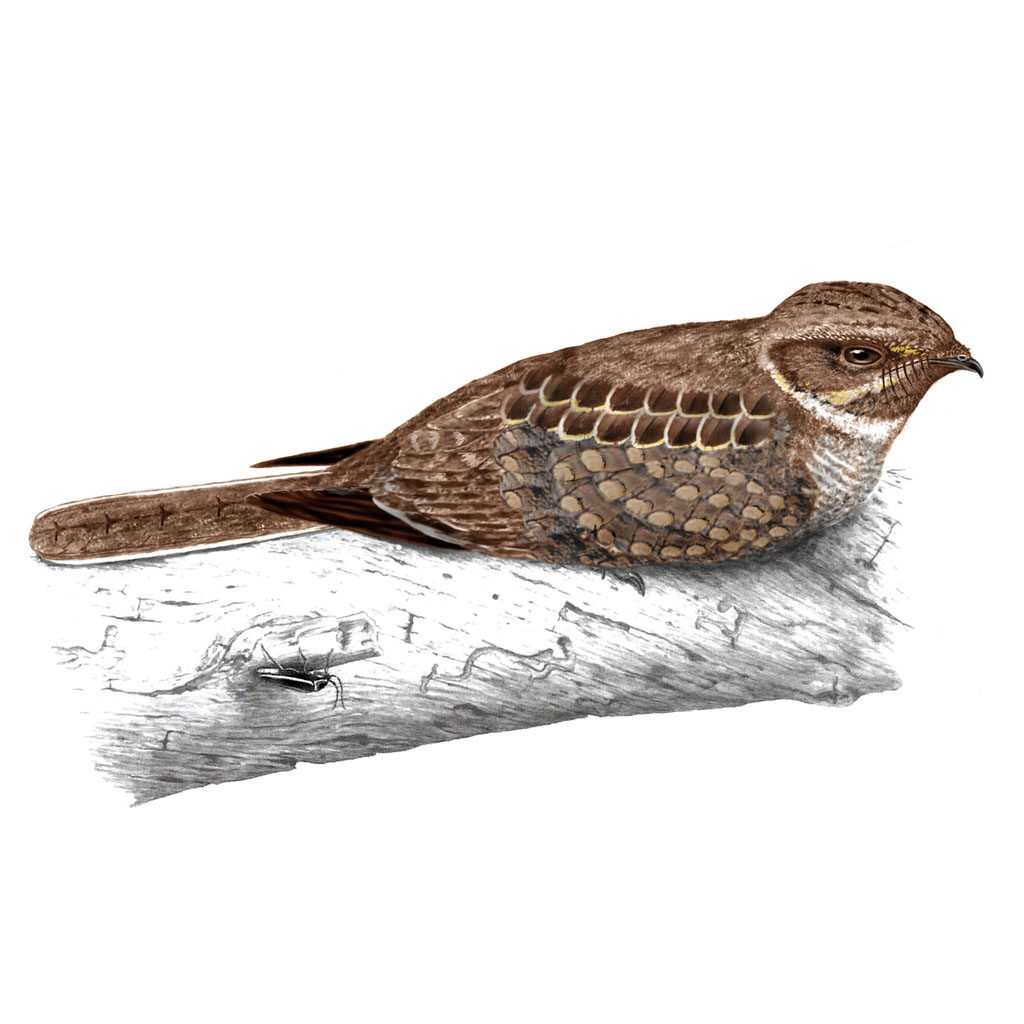Common Pauraque

You’ve probably only seen the Common Pauraque (por-AH-keh) as a black ghost with glaring redeyes, popping eerily up off the road in front of your vehicle as you drive down country roads at night. It’s waiting on that road or on a footpath or other open areas, ready to leap into flight to catch insects visible against the lighter road or the sky. In the daytime you might look right at a pauraque, nestled in the debris on the rainforest floor, and see only random leaves. There’ a great video here – you can stop and replay parts to see if you can spot the pauraque before it flies.
The parauque’s camouflage is extraordinary. A gardener in Costa Rica once led me to within three feet of a pauraque on its nest under a shrub, and pointed to it. Even that close, and knowing exactly where to look, it still took me several seconds to make out the bird nestled down over her eggs.Tiny feet are characteristic, as is the miniature beak on a mouth which opens into a cavernous hole you could pop a ping-pong ball into. The sides of the face are lined with long, curved whiskers which make the huge mouth a very effective insect trap.
The pauraque is related to whip-poor-wills, chuck-will’s-widows, and night hawks and is found from Texas to South America. It is insectivorous and crepuscular, meaning it hunts insects at dusk and dawn, and when the moon is bright, throughout the night. It doesn’t do well near civilization because its ground-living habits and its eggs and nestlings on the forest floor make it vulnerable to free-roaming dogs and cats. So we’re lucky to see a pauraque (even if it is only red eyes on a startling black ghost!) along Hydro Road. More about pauraques here.
And keep your dog on its leash at all times, please.